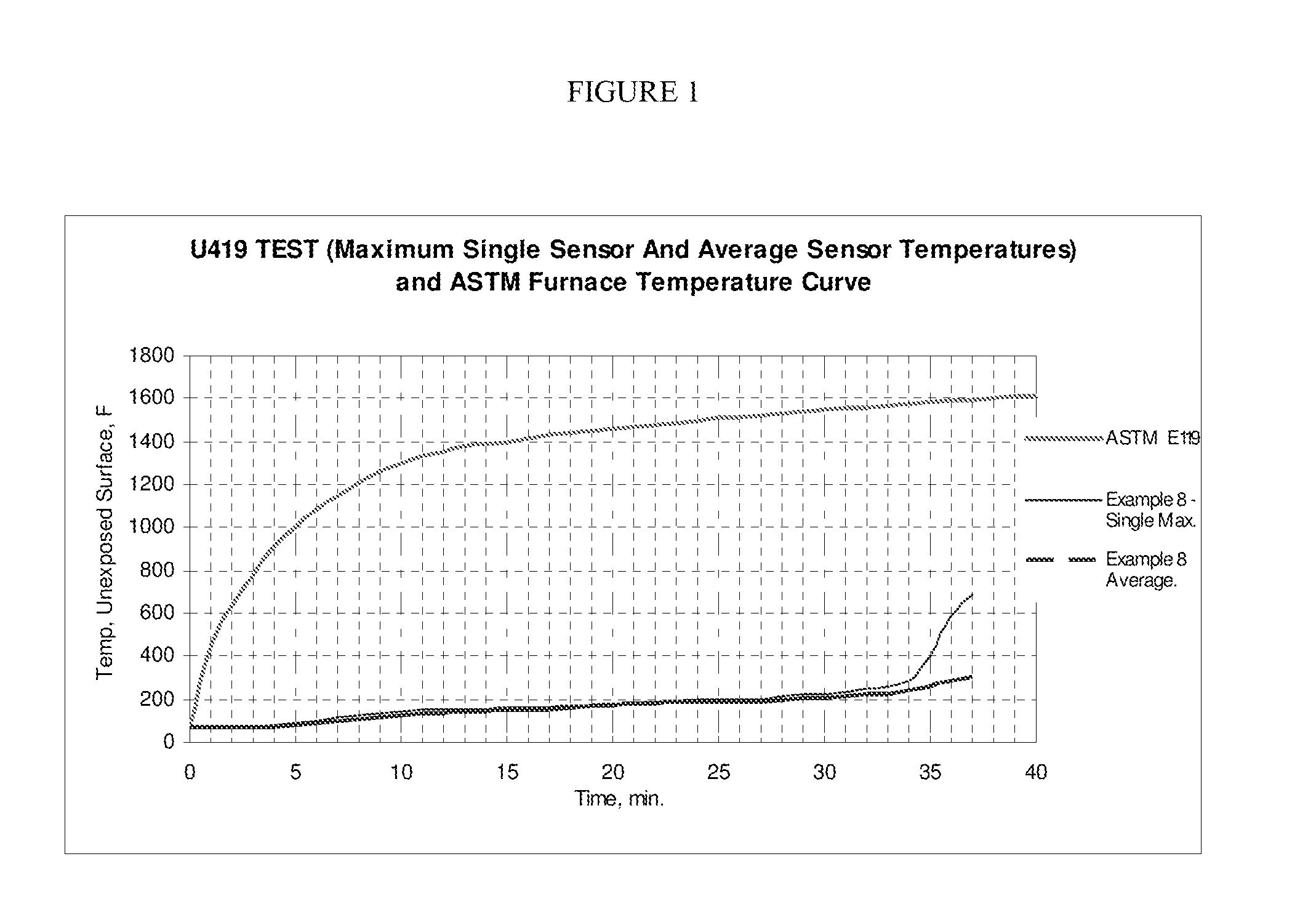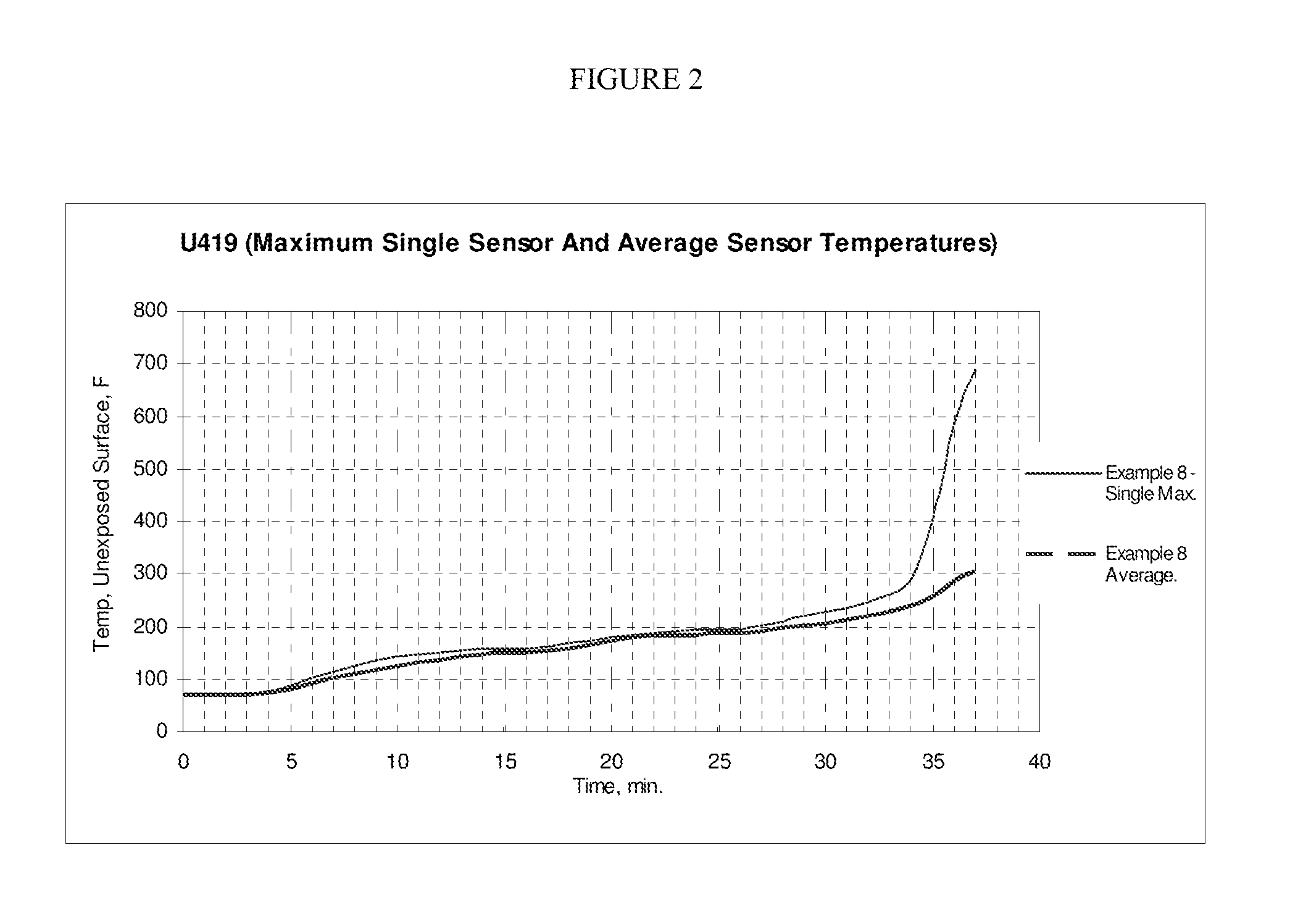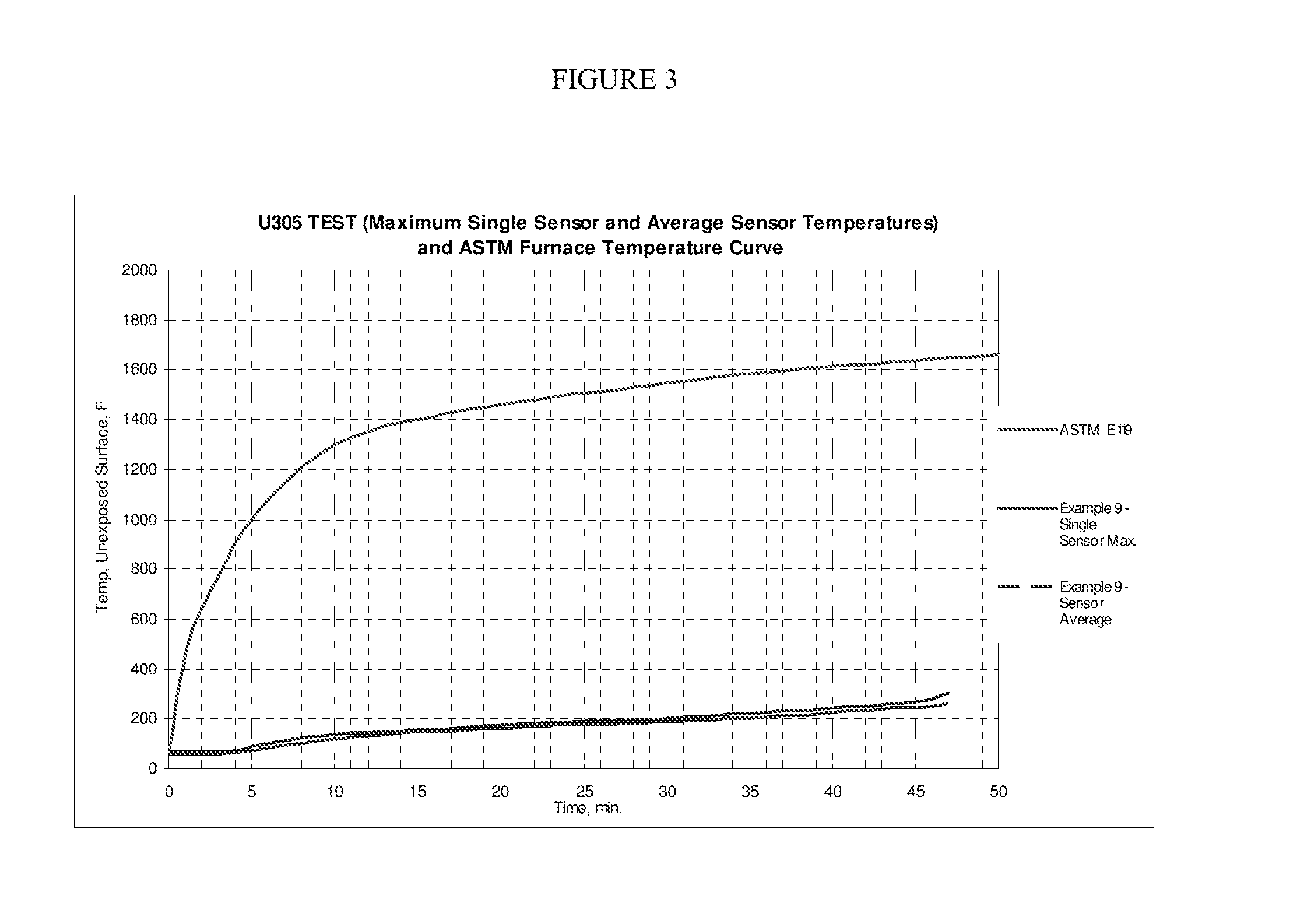Low Weight and Density Fire-Resistant Gypsum Panel
a gypsum panel and low weight technology, applied in the direction of solid waste management, synthetic resin layered products, water-setting substance layered products, etc., can solve the problems of gypsum core phase change, time-consuming heating step, salt and impurity melting or other complexing, etc., to achieve the effect of dimensional stability of the panel, little expansion, and little cracking
- Summary
- Abstract
- Description
- Claims
- Application Information
AI Technical Summary
Benefits of technology
Problems solved by technology
Method used
Image
Examples
example 1
[0123]Sample Gypsum Slurry Formulations.
[0124]Gypsum slurry formulations are shown in Table 1 below. All values in Table 1 are expressed as weight percent based on the weight of dry stucco. Values in parentheses are dry weight in pounds (lb / MSF for a nominally ½ inch thick panel).
TABLE 1ComponentFormulation AFormulation BStucco (lb / MSF)(732)(704)sodium0.20 (1.50)0.30 (2.14)trimetaphosphateDispersant0.18 (1.35)0.581 (4.05) (naphthalenesulfonate)Pregelatinized starch2.7 (20)6.4 (45) Board starch0.41 (3.0) 0Heat resistant (15) (15)accelerator (HRA)Glass fiber0.27 (2.0) 0.28 (2.0) Paper fiber 00.99 (7.0) Soap* 0.03 (0.192) 0.03 (0.192)Total Water (lb.)805852Water / Stucco ratio 1.10 1.21*Used to pregenerate foam.11.28% by weight as a 45% aqueous solution.
example 2
[0125]Preparation of Panels.
[0126]Sample gypsum panels (nominally about ½ inch thick) were prepared in accordance with U.S. Pat. Nos. 6,342,284 to Yu et al. and 6,632,550 to Yu et al., herein incorporated by reference. This includes the separate generation of foam and introduction of the foam into the slurry of the other ingredients as described in Example 5 of these patents.
[0127]Test results for gypsum panels made using the Formulations A and B of Example 1, and a control are shown in Table 2 below. As in this example and other examples below, nail pull resistance, core hardness, and flexural strength tests were performed according to ASTM C-473. Additionally, it is noted that typical gypsum panel is approximately ½ inch thick and has a weight of between about 1600 to 1800 pounds per 1,000 square feet of material, or lb / MSF. (“MSF” is a standard abbreviation in the art for a thousand square feet; it is an area measurement for boxes, corrugated media and wallboard.)
TABLE 2Formulati...
example 3
[0130]½ Inch Gypsum Panel Weight Reduction Trials.
[0131]Further gypsum panel examples (Boards C, D and E), including slurry formulations and test results are shown in Table 3 below. The slurry formulations of Table 3 include the major components of the slurries. Values in parentheses are expressed as weight percent based on the weight of dry stucco.
TABLE 3ControlFormulationFormulationFormulationBoardC BoardD BoardE BoardTrial formulationcomponent / parameterDry stucco (lb / MSF)1300128111961070Accelerator (lb / MSF)9.29.29.29.2DILOFLO1 (lb / MSF)4.1 (0.32%)8.1 (0.63%)8.1 (0.68%)8.1 (0.76%)Regular starch (lb / MSF)5.6 (0.43%)000Pregelatinized corn starch0 10 (0.78%) 10 (0.84%) 10 (0.93%)(lb / MSF)Sodium trimetaphosphate0.7 (0.05%)1.6 (0.12%)1.6 (0.13%)1.6 (0.15%)(lb / MSF)Total water / stucco ratio0.820.820.820.84(w / s)Trial formulationtest resultsDry board weight1611157014511320(lb / MSF)Nail pull resistance (lb)77.3†85.577.265.2†ASTM standard: 77 lb1DILOFLO is a 45% Naphthalenesulfonate solution in w...
PUM
| Property | Measurement | Unit |
|---|---|---|
| core density | aaaaa | aaaaa |
| thickness | aaaaa | aaaaa |
| temperature | aaaaa | aaaaa |
Abstract
Description
Claims
Application Information
 Login to View More
Login to View More - R&D
- Intellectual Property
- Life Sciences
- Materials
- Tech Scout
- Unparalleled Data Quality
- Higher Quality Content
- 60% Fewer Hallucinations
Browse by: Latest US Patents, China's latest patents, Technical Efficacy Thesaurus, Application Domain, Technology Topic, Popular Technical Reports.
© 2025 PatSnap. All rights reserved.Legal|Privacy policy|Modern Slavery Act Transparency Statement|Sitemap|About US| Contact US: help@patsnap.com



